Like Google Drive, Google Photos provides cloud-based storage for all media files. These may include photos, videos, GIFs, or other formats. Besides giving standard storage, Photos has been continuously updated to include more and more features. Users can enjoy better tools and advanced options with each new release rendered into its existing platforms.
Currently, it contains almost everything a local gallery has. You can create albums, share them with others, perform edits, make slideshows, and so much more. If we begin to list down the sheer number of features, Google Photos would easily outperform any other gallery or media storage platform. The same is the case for private content as well. Google Photos enables you to make and handle private albums that are not only secure but also hidden from plain view. The following article will look at how you can create private albums in Google Photos on Android.
Why make private albums in Google Photos?
When it comes to storing files over the cloud, people have some serious concerns about their data. Cloud storage platforms, just like Google Photos, have been competing to deliver users the latest and most secure storage services to address these concerns. Before we go on to see how you can make private albums, you should know how important it is to create these in the first place.
For those who do not already know, Google Photos is an incredibly user-friendly platform for sharing files and albums. Considering the private photos, people tend to keep in their galleries, securing them as much as possible becomes rather significant. It could be important documents, private pictures, files containing personally identifiable information, certificates, records, and more. Even though Google maintains highly effective security protocols, there is no harm in taking additional measures. Besides, you will not be making private albums for every single picture. What we are describing is essentially for those files which are categorically private and must not be shared with anyone else.
Once you have some photos uploaded to a platform, you can only add on as much protection as its backend allows. In the case of Google Photos, there are two ways you can hide stuff and make it just a bit more secure than usual. One option is to use the Google Photos archive, which takes any picture or video from its original location and dumps it into a hidden vault. The second method makes use of the “Locked folder.” After you set it up, this folder can only be opened using the device screen lock.
Making private albums through the Google Photos archive
If you have been using any cloud-based service, you might have noticed that these services are ineffective in file management. There have been some noticeable improvements over the years, but we still miss intuitive file and folder management usually found on local operating systems. In this regard, Google Photos is no different. When you log in to your account on Photos, the screen gets cluttered with plenty of individual previews and icons. You can organize photos using folders and albums, but sometimes those are not enough.
To counter this issue, Google included an archive inside Photos which can be used to store away some files. The Google Photos archive allows you to hide pictures and videos from the view gallery. This can be used as a workaround for making photos private. You will treat the archive folder as a private album not present at any other location. Please note that even though you cannot view archived files inherently, they may still be found in search results and selection tools.
Adding files to archive
Keep in mind that the Photos archive is developed explicitly for those pictures which are not required to be viewed or shared regularly. Archiving a photo will drop it in an isolated folder, distant from other files. This is a smart key to hiding critical or confidential pictures from a general view. You can still access archived files, but they are not found in “Recent” or “Favorites.”
Google Photos has exquisitely developed applications for both Android and iOS. The app is pre-installed on all Android phones and usually found in the “Google” folder on the home screen. If you have an iOS device, download the Google Photos application from Apple App Store beforehand. Once installed, both platforms run these apps similarly, and there is no considerable difference in the user interface. For the sake of this tutorial, we have only listed down the step-by-step method for adding files to the archive on Android.
Step 1: Open the “Google Photos” application on your mobile device. Log in with your account.
Step 2: On the “Google Photos” homepage, you will see four tabs at the bottom of your screen. Make sure that you are on the “Photos” tab.

Photos tab
Step 3: Scroll down to find the picture you want to make private. Long press the image preview. Doing so will select that photo and also put you in selection mode. Now, tap on all other images to be made private.
Step 4: Once you have selected all images, tap on the three-dot icon in the top right corner.
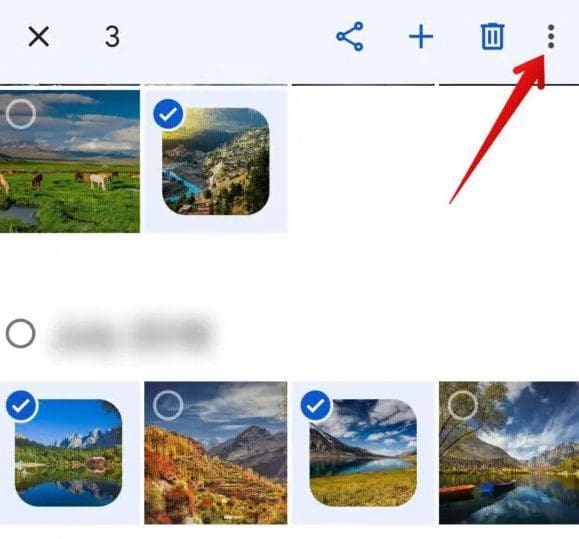
Selecting photos to be archived
Step 5: Doing so opens up a drop-down menu. Tap “Move to Archive” to send those images into the archive folder.
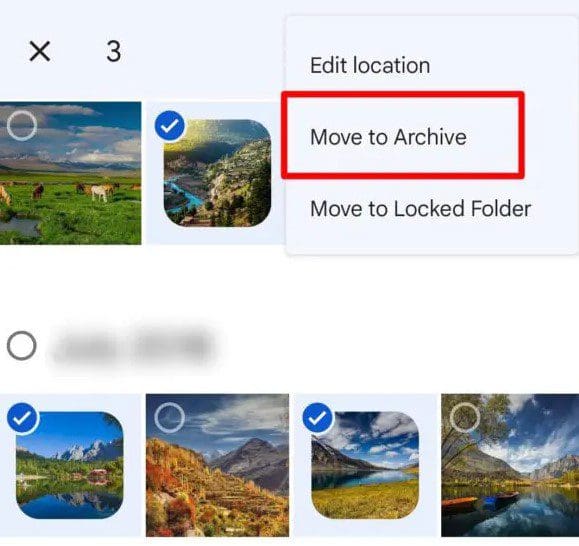
Moving to archive
If you want to select a range of files, select the first image and drag your finger to the last picture. Doing so will mark all photos between these two as selected. Once you have made these files private, the next step is to know how to access them afterward. The archive folder is in the library tab on mobile devices, always displayed at the bottom.
Step 1: Open the “Google Photos” application on your mobile device. Log in with your account.
Step 2: On the “Google Photos” homepage, you will see four tabs at the bottom of your screen. Make sure that you are on the “Library” tab.
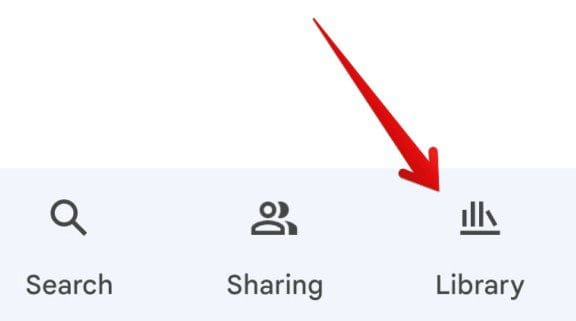
Library tab
Step 3: There are four different sections on the top. Tap on the “Archive” button to open the respective page.

Archive button
Removing files from the archive
Please note that one cannot create subfolders within the Google Photos archive. If you want to remove a private file from that location, all you can do is remove them. Doing so will restore that file or image to its original folder/album.
Step 1: Open the “Google Photos” application on your mobile device. Log in with your account.
Step 2: On the “Google Photos” homepage, you will see four tabs at the bottom of your screen. Make sure that you are on the “Library” tab.
Step 3: There are four different sections on the top. Tap on the “Archive” button to open the respective page.
Step 4: Scroll down to find the picture you want to remove. Long press the image preview. Doing so will select that photo and also put you in selection mode. Now, tap on all other images to be removed.
Step 5: Once you have selected all images, tap on the three-dot icon in the top right corner.
Step 6: Doing so opens up a drop-down menu. Tap on “Unarchive” to remove those images from the archive folder.

Unarchive button
Making private albums using the locked folder
The locked folder inside Google Photos is primarily made to protect sensitive and private files. This folder allows you to save these photos and videos to a location on the cloud secured by your device screen lock. Items present in the locked folder do not appear in the Photos grid, memories, search, or albums. Also, they are not even available to other applications that might have access to the Google Photos gallery.
Setting up a locked folder in Google Photos
Before setting up a locked folder in Google Photos, keep in mind some important information. As of now, this feature is only available on Android 6 and later versions. Do not forget that anyone with access to the device screen lock can unlock this folder just like you would. There is no option to set up a different password not used anywhere else on that device.
Moreover, if you uninstall the Photos application or clear its app data, you will immediately lose access to all items in the locked folder at that time. To save any critical files, remove them before you make any changes.
Step 1: Open the “Google Photos” application on your mobile device. Log in with your account.
Step 2: On the “Google Photos” homepage, you will see four tabs at the bottom of your screen. Make sure that you are on the “Library” tab.
Step 3: There are four different sections on the top. Tap on the “Utilities” button to open the respective page.
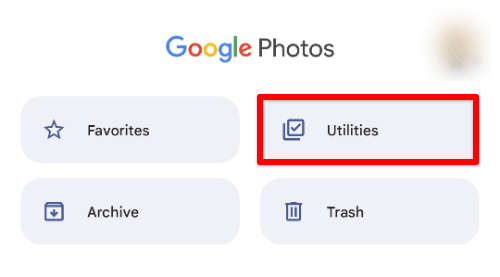
Utilities button
Step 4: You will see tons of different Google Photos features here. Look for the “Locked Folder” menu. Tap on “Get started.”
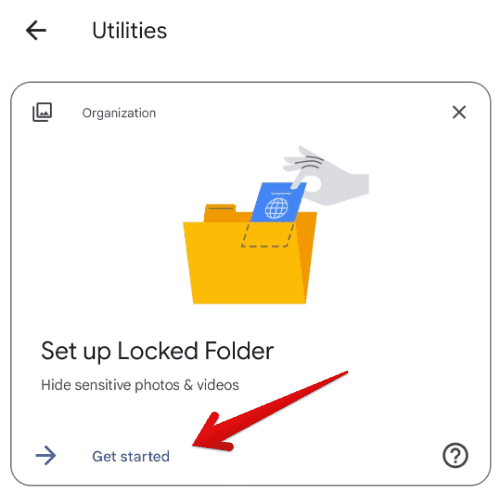
Setting up the Locked Folder
Step 5: An information window will appear on the screen. Tap on the “Set up” button at the bottom. Follow the on-screen instructions to unlock your device. Once the setup is completed, you can move any photo or video to this folder.
Conclusion
Google Photos is the most advanced online storage specialized for photos and videos. Apart from a range of other features, it also provides two distinctive methods for making a private album. You can either archive the files you want or move them to a locked folder with a screen lock. Both options hide those photos from plain view and deliver an additional layer of protection and privacy.
